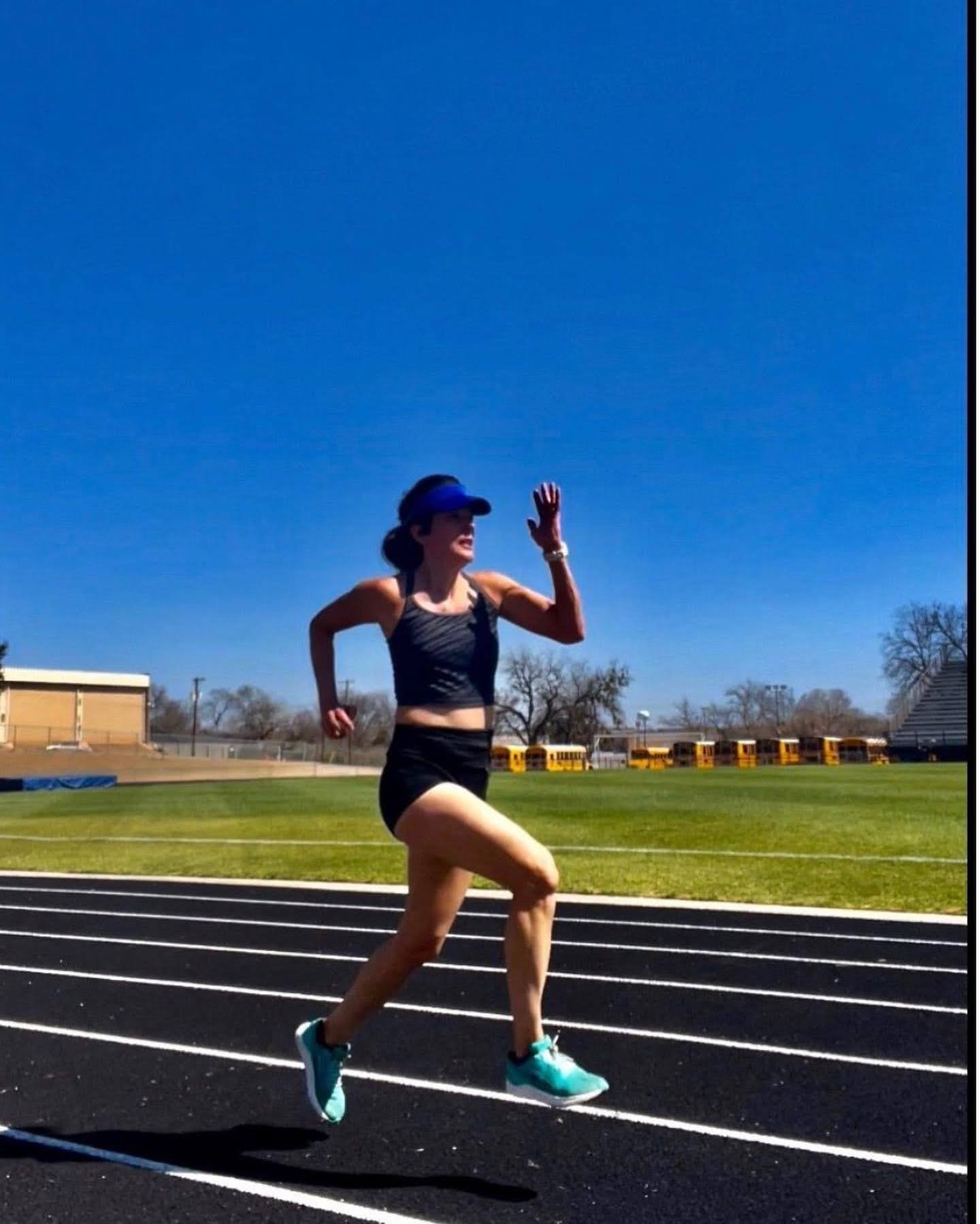I am working on a new strength training and running program. It will include running workouts as well as short runner-specific strength workouts that can be completed after your runs on easy effort days. I am writing the program for a wide audience (hopefully, cross your fingers and toes) so I have to be more general than I would be with my own clients. Since I don't know your running background, experience or injury background, I can't give you specifics on what paces or distances you should run. As I learned in my Precision Nutrition training, don't "should" all over your clients. It's not about what you should do, it's about what you are ready, able and willing to do.
For example, if I assign a 10 minute mile pace for three miles as an "easy" day run, this may not be so easy for a brand new runner. On the other hand, if I assign a 9 minute mile pace for five miles as a tempo run, it may not be challenging enough to achieve tempo for a more experienced runner.
On my programs, I define runs as "easy runs" and "interval runs" and I leave it up to you to decide what those paces mean to you. If you try to hit someone else's arbitrary paces before your fitness level dictates it, you'll only end up frustrated and possibly injured.
We solve this issue by using the RPE (rate of perceived exertion) chart. It is very easy to follow. You base your pace on your perceived level of effort. By determining your own paces based on your current fitness level you will be able to grow with the program as you get faster and stronger.
THE TALK TEST | RPE CHART
Your RPE can be determined by the talk test.
RPE:1 No effort. You are probably sitting.
RPE:2-3 Light effort. Breathing is extremely easy. You may be walking at a leisurely pace.
RPE: 4-6 Moderate effort. You are working a little harder, maybe a jog, but you can carry on a full conversation at this pace without gasping for air between words or sentences.
RPE: 7-8 Hard effort. You can speak a sentence or two at a time before having to taking a gasp of breath.
RPE: 9 Extremely hard effort. You can get out a word or two but breathing is labored and talking is challenging.
RPE: 10 Maximum effort. You are completely out of breath and unable to talk. You would only be able to hold this pace for a very short time.
EASY RUN
When your plan has an easy run day, this would be a RPE level 2-6. You should always be able to talk through full sentences and conversations when at this pace. It is sometimes referred to as 'conversational pace.' For some this may be walking briskly, for others a jog.
To get the most out of your training it is important to go easy on easy days and hard on hard days.
INTERVAL PACE
An interval is when you run at varying paces throughout the workout. It is an effective and time-saving way to get the most out of your run. In an interval run, I may ask you run one minute at a RPE of 7-8 followed by one minute at a recovery pace. Your speed for one speed minute interval should feel hard, but not an all out effort. It may take some experimenting to find out what that pace is for you.
RECOVERY PACE
The recovery period during the interval workout will be a RPE 2-3. After a period of a hard effort, you will return to a much easier pace in order to recover before repeating the interval.
TRACKING YOUR PROGRESS
If you have the means to do it with a GPS watch or a treadmill, I recommend tracking your current paces at each RPE level. You may find when you start, as an example, that a RPE 2-3 is a 15 minute mile, a RPE 4-6 is a 10 minute mile and a RPE 7-8 is 9 minute mile. Then over time, as you get faster and more efficient, your paces will go down for each level. You may find after regular training that now your RPE for 2-3 is a 12 minute mile, RPE 4-6 is a 9:30 minute mile and RPE 7-8 is an 8:30. It's a great way to track improvements. Make sense? Have questions? I'm happy to help.
RUNNING SPEED INTERVAL WORKOUT
Here is a workout that you can try to get a feel for the different paces. This is a very short and efficient workout. I recommend warming up with dynamic stretches before the run, then begin with the 3 minute RPE 2-3 pace as shown below.
You'll notice that as we start with a 3 minute interval at a moderate pace then a 2 minute interval at a harder pace and finish with one minute at an extremely hard pace. See what feels right for you at each of these work intervals.
The pace you choose for the 3 minute interval will feel harder than a walk, but not so hard that you can't maintain it for three minutes.
The 2 minute interval will be a little harder than your 3 minute interval, but still not so hard that you can't maintain the pace for two minutes
The final 1 minute interval will be just under an all-out effort. Good thing you only have to hold that pace for one minute.
Either cool down with a three minute recover walk (beginners) or repeat the workout (advanced).
Like this post? It helps me when you share with your friends and followers.














When you train to run a marathon, it may require the development of new skills. Running is a skill, but are you considering the other skills that may need to be cultivated? I highlighted some important skills needed for marathon training: Time management, moving often, moving well, eating enough nutrients, getting enough sleep, having a growth mindset, and tolerating stress. What can you improve in your lifestyle to elevate your training?